
Choosing a mobility scooter
Choosing a mobility scooter
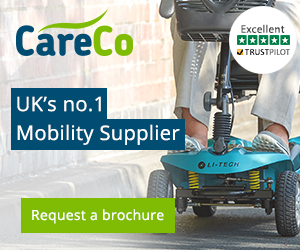
Sponsorship has no influence on our impartial content
- Introduction
- Provision of mobility scooters
- Considerations when choosing a scooter
- Mobility scooters
- Licensing or registering a Class 3 mobility scooter
- Insurance for your mobility scooter
- Carrying passengers
- The Highway Code
- Training and safety
- Storage
- Mobility scooter batteries
- Servicing and maintaining your mobility scooter
- Taking your scooter on public transport
- Parking your scooter in public places
- Accessories for a mobility scooter
- Useful organisations
- For further advice from us
- Bibliography and references
Introduction
If your ability to walk reasonable distances is limited or deteriorating, you may be considering getting a mobility scooter. Use of mobility scooters has been shown to improve a person’s abilities, social participation and life satisfaction (Samuelsson and Wressle, 2014). Before obtaining one, it is important to consider a number of factors about yourself and about scooters, so that you and/or your carers can make informed decisions and choices.
The aim of this factsheet is to provide basic information for you to consider before obtaining a mobility scooter, including your needs and your current circumstances; the various categories of scooter; the practical requirements when owning a scooter; legal requirements, safety factors and insurance and a number of accessories that might be useful to you.
Whilst it is recognised that having a mobility scooter can enable you to get out and participate in activities that may otherwise be inaccessible to you, you are encouraged to try and walk at least short distances, if this is possible for you. The health benefits of physical activity are well documented (Taylor, 2014) and can help to maintain the mobility and physical ability that you currently have.
Provision of mobility scooters
The NHS and social services do not provide outdoor electric scooters or buggies. It is possible to buy scooters through retailers or rent them under a number of schemes.
Many retailers are members of the British Healthcare Trades Association (BHTA), which means that they adhere to the organisation’s code of practice. You can search the BHTA website for local retailers: www.bhta.net
Some schemes and suppliers will offer an assessment of your needs. Be certain of your preferences and requirements before you look at any scooters, so that you are not encouraged or tempted to buy something which will not actually meet your needs.
Motability
The Motability Scheme provides a way for people with disabilities to lease a car, scooter or powered wheelchair in exchange for their mobility allowance. To be eligible to join the Motability Scheme, you need to receive one of the following mobility allowances and you must have at least 12 months’ award length remaining. Please note that the Attendance Allowance cannot be used to lease a vehicle through the Scheme.
- Higher Rate Mobility Component of Disability Living Allowance (HRMC DLA)
- Enhanced Rate Mobility Component of Personal Independence Payment (ERMC PIP)
- War Pensioners' Mobility Supplement (WPMS)
- Armed Forces Independence Payment (AFIP)
More information is available at: www.motability.co.uk/about-the-scheme/who-can-join
Shopmobility
Shopmobility is a service that helps all people who consider themselves to have mobility problems (whether through disability, illness or injury) to continue to get around city and town centres independently. It offers a range of mobility and other equipment for hire.
More information is available at: www.shopmobility.org.uk
Access to Work
Access to Work provides grants for practical assistance if you have a disability, health or mental health condition, in order to help you gain employment, stay in employment, or even become self-employed. Access to Work may provide funding for a mobility scooter if it is required for the purposes of your work and there is no more cost-effective alternative. You will need to contact your local Jobcentre Plus.
More information is available at: www.gov.uk/access-to-work/overview
Charity funding
There are a number of trusts and charities that will consider funding scooters. More information is under the Useful Organisations section at the end of this factsheet.
Second hand equipment
There is a large market in second hand mobility equipment, including schemes run by commercial suppliers. There is some advantage to using a recognised company as most offer scooters which have been serviced or reconditioned and have a short warranty or service agreement.
If you are buying a second hand scooter from a private individual, ensure you are given the accompanying literature, an instruction manual and any service history.
Each mobility scooter has a unique vehicle number. You can check the number with the manufacturer to confirm that the information you have been given by the seller is correct and to check whether spare parts are still available.
Considerations when choosing a scooter
Scooters come with a number of options in terms of size, power, speed, weight, seat support and so on. It is important to recognise what your needs are, in order to get the right scooter to help you in your circumstances.
There are a number of factors about yourself to consider:
- Your mobility – this is your ability to move around. It includes walking, sitting down and standing up (called transferring), and adjusting or moving your body within the scooter.
- Your tolerance – this is the length of time you can tolerate doing something, for example standing, walking or sitting.
- Your balance – this is your ability to remain steady when standing and when seated.
- Your posture – this is the position in which you hold your body.
- Your body weight – if you are a large person you will need to look for a scooter that is appropriate and safe for you. Measure and record your weight accurately and check the manufacturer's details.
- Your sight, perception, memory and cognitive ability – if you are losing your visual, perceptual, memory or cognitive abilities, it is unlikely that a scooter will be appropriate for you.
Consider how all these factors will be affected by, and will affect, your use of the scooter. There is currently no minimum 'fitness to drive' standard for mobility scooter users. If you have a condition which is deteriorating, you may wish to take account of your possible future needs at this earlier stage. A scooter is a significant investment. You will want to be able to use it safely and for long enough to make it worthwhile.
You also need to take into account the needs of any person who will be helping you to carry out basic maintenance tasks, for example charging the batteries. Their level of ability and safety need to be considered.
Dementia and mobility scooters
Dementia can affect a person in many ways, including memory, concentration, judgement, vision, planning or problem-solving. It is a progressive disorder and those affected may not have insight into their illness. They may not be able to make a realistic judgement about their ability to use a scooter safely.
Many people in the early stages of dementia can still travel independently on mobility scooters if they are already familiar with using one. They should use familiar routes and carry relevant identity documents with them when alone, should they get lost. A GPS tracking system can be considered (see Choosing equipment to help with memory and safety for more information). Introducing a scooter as a new item to someone who already has dementia should not be considered.
If already using a scooter, it can be difficult to decide when an individual should stop. Some indicators might be:
- becoming less confident or repeatedly confused about the scooter controls;
- repeatedly getting lost;
- forgetting the purpose of the trip;
- becoming less aware of safety precautions.
The guidance on when to give up driving a car can be useful and applied to the use of a scooter. If a person has early dementia, when sufficient skills are retained and progression is slow, driving may still be allowed, but subject to review. When a person displays poor short term memory, disorientation, lack of insight and judgement, they are likely to be considered unfit to drive (Driver & Vehicle Licensing Agency, 2016).
Your eyesight
Although there are no legal eyesight requirements, it is important that you can see well enough to be able to judge distances, recognise obstacles and hazards, and be able to see pedestrians and other road users. If poor eyesight were taken as a contributory factor in an incident, it could make you liable for a compensation claim. Vision can change with age and it is recommended that you have regular sight tests. You should have a minimum visual acuity of 6/24.
If you are eligible to be registered as severely sight impaired (blind), you should not drive a mobility vehicle as this would put yourself and others at risk. If you are eligible to be registered as sight impaired (partially sighted), you should speak to your optometrist or doctor.
(Adapted from Department of Transport 2015, p10)
Your mobility and tolerance
In order to use a mobility scooter, you will need to be able to walk to where the scooter is stored and transfer into it, then transfer out of it and possibly walk a short distance at your destination, for example the corner shop or local library. You may need to check your destination in advance to see whether they allow scooter access or have suitable and secure storage for it.
Some scooters have a swivel seat which can make transfers much easier. Others have fold-up armrests which can be raised to provide easier access. On some, the tiller (or steering column) can tilt forward to provide more space into/from which you can transfer. You need to ensure that you can use these features, then re-position them and yourself ready to drive, once seated in the scooter.
Your balance and posture
When using a scooter, you need to be able to maintain a comfortable, stable, safe and supported seated position. The seat and backrest should be padded and contoured to provide comfort and help you to maintain your position. Some models offer a variable height seat and an adjustable backrest. The seat/backrest width should give you enough room for winter-weight clothing, but not be so big that it causes you to lean sideways to find support. This is particularly important if you have poor upper body strength and control.
Your mobility requirements
Consider where you want your mobility scooter to take you:
- Do you want to use the scooter indoors, outdoors or both?
- How far might you want to travel?
- What is your local area like? Are there wide pavements? Will you have to go up and down kerbs?
- Might you need to travel on the road?
The answers to these questions will guide you in choosing what type of scooter is best for you. Your personal health requirements will guide you in the features you need to look for.
Mobility scooters
The use of mobility scooters has grown significantly. This has led to rising concern over their safe use and how they should be treated in law. They are currently defined and governed by several pieces of older legislation, using the term ‘invalid carriages’. Following a consultation in 2010, the Department of Transport issued some improved guidance for mobility vehicle users which you are strongly advised to read. It is available here:
Officially a mobility scooter may only be driven by a disabled person – a person with an injury, physical disability or medical condition which means they are unable to walk, or have difficulty walking. A non-disabled person may only drive them if they are demonstrating the scooter pre-sale, taking it to/from being mended or serviced, or providing training (Department for Transport 2015, p5).
Types of mobility scooters
Mobility scooters (invalid carriages) come in two legal categories, Class 2 and Class 3. The differences in weight and power (and thereby speed) of the two enable them to be used in different environments, but also have different legal requirements for the driver.
Class 2:

- are generally smaller, lighter and less powerful;
- can be designed for indoor and/or outdoor use. If for indoor use, they will have limited outdoor use and less distance range;
- some can be dismantled or folded for transporting;
- cannot be used on the road (except where there is no pavement or to cross the road);
- outdoor models have the ability to climb kerbs;
- have a top speed of 4 mile/hour (6.44 km/hour);
- do not need to be registered with the Driver Vehicle Licensing Authority (DVLA).
Class 3:

- are generally bigger, heavier and more powerful;
- are not for indoor use;
- can be used on the road;
- have a longer distance range;
- cannot be dismantled;
- have a number of additional safety requirements to allow road use;
- have a top speed of 4 miles/hour (6.44 km/hour) off the road and 8 miles/hour (12.9 km/hour) on the road;
- must be registered with the DVLA;
- the user must be aged at least 14 years.
Class 3 vehicles are not allowed on motorways, bicycle tracks or bus/cycle lanes, but are legally allowed on dual carriageways.
Boot scooters

Boot scooters, which would be classified as Class 2, are specifically designed to be compact and easier to fold or dismantle. They can be transported in the boot of a car. Boot scooters differ in weight. You will need to ensure that you, or your carers, can disassemble or fold the scooter, then lift the scooter in and out of the boot and finally reassemble/unfold it at your destination.
You will need to know the size of your car boot to ensure that your scooter will fit. The Rica website offers a car search facility which will help you to find out the size of your car boot.
www.rica.org.uk/content/travelling-scooter
Licensing or registering a Class 3 mobility scooter (invalid carriage)
You don’t have to pay vehicle tax for any mobility scooter or powered wheelchair, but you do need to register Class 3 mobility scooters.
To register a Class 3 mobility scooter you need to complete form V55/4 for new vehicles, or V55/5 for used vehicles. You can get the forms from the Driver and Vehicle Licensing Agency (DVLA) online ordering service. You can’t license your mobility scooter online or at a Post Office. You will need to send the completed forms and evidence of the vehicle’s age (if available) to: DVLA Swansea, SA99 1BE.
More information is available on the Government website:
www.gov.uk/mobility-scooters-and-powered-wheelchairs-rules/overview
Insurance for your mobility scooter
You do not have to have insurance for your mobility scooter, but it is highly recommended that you do. Third party insurance will cover you for other people making a claim against you if you are involved in an accident or cause some damage. Other policies will also insure against injuries to yourself and loss or damage of your scooter.
The Motability Scheme provides insurance cover:
www.motability.co.uk/information-for-customers/scooter-insurance-cover-details/
The Rica website lists a number of companies offering insurance:
www.rica.org.uk/content/safety-and-insurance
Carrying passengers
The Department for Transport hold the view that the adaptation of the mobility scooter itself to carry a second person/child is not permitted by law, as defined by the Chronically Sick and Disabled Persons Act 1970, when it defines an “invalid carriage” as:
“a vehicle, whether mechanically propelled or not, constructed or adapted for use for the carriage of one person, being a person suffering from some physical defect or disability.”
(Great Britain. Parliament 1970. Section 20(2))
However, it notes that the law does not explicitly state that a parent or guardian carrying a child in a pouch or a sling on their person, as an adult who was not disabled would do, is unlawful. It is a personal decision whether this is considered safe practice.
(Adapted from Department for Transport, 2011)
The Highway Code
Part of the Highway Code (Department for Transport 2016) provides rules for powered wheelchairs and mobility scooters. It is available on the Government website:
A range of commercial organisations, manufacturers and police forces have produced user friendly versions of the Highway Code for scooter users. Some suppliers will provide a copy with your scooter.
Training and safety
Powered mobility vehicles have many benefits for users, but also create the risk of accidents resulting in injuries (Edwards and McCluskey, 2010). It has been demonstrated that training to improve driving skills and awareness when using scooters is beneficial in reducing the likelihood of accidents (Toosizadeh et al, 2014).
Some commercial providers will offer training. You are advised to look at the level of training available. Training should cover, as a minimum:
- Operating and controlling the scooter.
- Manoeuvrability.
- Safety and awareness.
- The law and mobility scooters.
- The Highway Code for scooters.
Mobility Centres offer assessments, advice and guidance around the safe use of scooters. They may also be able to advise you of other organisations which can provide training close to you. You can find your nearest centre here:
www.drivingmobility.org.uk/find-a-centre
Storage

Your mobility scooter will need to be stored in a secure, dry place, with access to a power source for battery charging. You need to ensure that it is not a trip hazard or a fire hazard (by blocking escape routes) for yourself or anyone else whilst it is stored.
If you need to store your scooter outside, you are advised to get a waterproof cover for it.
If you live in a communal property, such as council or housing association flats, sheltered housing or a care home, you must seek advice and permission from the landlord/organization in relation to storing and charging your mobility scooter. There are usually strict rules preventing the storage and charging of mobility scooters in communal areas. They are not usually allowed to be stored in corridors or stair wells to prevent them from being an obstruction or trip hazard.
You may have space for a smaller scooter in your personal flat/room, or there may be an allocated room/ space for storage. In any situation check that it is not a hazard to yourself or any other person.
If you lived in rented communal accommodation, it is likely that you will be required to have an annual PAT (portable appliance test) for your scooter to ensure that the charging equipment is in a fit state to be used.
Mobility scooter batteries
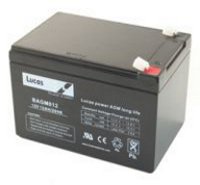
All mobility scooter batteries will need to be charged, using an ordinary electric socket. They will need replacing after 12 to 18 months depending on their type and use. Always ensure that new batteries are suitable for your mobility scooter in terms of type, size and weight. Your supplier or your local council will be able to advise you how to dispose of old batteries.
There are three main types of battery: lead acid, gel cell and AGM. Check with your supplier which type of battery your scooter has and how best to charge and maintain it. Ensure you are provided with the manufacturer’s instructions, especially if you are purchasing a second hand mobility scooter.
If you can store your scooter close to a power socket it will make charging easier, although most scooters will allow you to remove the batteries and charge them elsewhere. Batteries can be heavy and may be the heaviest part of the scooter or buggy. You may need to think about this if you dismantle the scooter for transport or storage.
Establish a regular charging routine. How often you need to charge the batteries will depend on how frequently you use the scooter, and how far you travel in it when you do use it. It will also depend upon the terrain you drive over, the weight your scooter is carrying, the age of the batteries and so on. If you use it daily, then overnight charging will be required. If you use the scooter less often, weekly charging may be sufficient. Charge the battery regularly, even if you do not use the scooter for an extended period of time. Avoid letting the batteries run completely flat and always fully charge them. Always use the proper charging cable.
Servicing and maintaining your mobility scooter
There are a number of things that you can do to maintain your scooter:
- Keep it dry. If you store it outside, get a waterproof storage cover for it.
- Keep it clean. Wash or wipe off any significant amounts of mud or dirt. Try to avoid driving over really wet, dirty or gritty areas. It is possible to damage the scooter’s motor if dirt or wet gets into the motor’s moving parts.
- Check the tyres. If your mobility scooter has pneumatic tyres, ensure these are kept at optimal pressure (check manufacturer's advice). Check the tyres for wear and tear. At some point they may need replacing.
- Check the lights. If you have a scooter that can be used on the road, your lights must be in working order.
- Check the brakes. If at any time you feel that the strength or speed of the brakes is diminishing, arrange for it to be inspected.
A regular service will ensure that your mobility scooter is safe, both for you and for those around you, especially if you use your scooter on the road. It will also keep it in good working order for longer.
It is advised that you get your mobility scooter serviced every 12 months as a minimum. Check the manufacturer’s instructions. Your supplier will also be able to advise you on this.
Taking your scooter on public transport
The Department for Transport guidance for users of mobility vehicles (2015) has information about taking your scooter on buses and trains. It is available here:
If you are planning any trip using public transport, you are advised to plan well in advance, making contact with any transport companies to ensure that mobility scooters are allowed, what the accessibility is like in any bus or train stations, what assistance might be available and what requirements might be made of you.
Some train providers offer a ‘Passenger Assist’ service, where free help can be arranged for getting on and off the train with baggage. You can book passenger assistance through National Rail Enquiries by calling 03457 48 49 50 or visiting their website.
More information about taking a mobility scooter or powered wheelchair on a train is available on the National Rail website. Train companies have different policies about carrying mobility scooters on trains. You can access the contact details and policies of all train operators from this site: www.nationalrail.co.uk/stations_destinations/44971.aspx
The Confederation of Passenger Transport and Department for Transport have developed a permit scheme and have produced a code of practice regarding the carriage of mobility scooters on low floor buses. This sets out the requirements for both bus service providers (drivers) and mobility scooter users. It defines which mobility scooters are allowed on buses and which are not. Class 2 scooters are generally allowed if they are within certain size limits (60cm by 100cm) and have been assessed as suitable. The user is then provided with a permit for travel. Class 3 scooters, which are significantly bigger and are designed to be able to go on the road, are not allowed.
You are advised to download and read the Code and to contact your local bus service provider. The Code is available to download from here: www.cpt-uk.org//_uploads/attachment/3568.pdf
More information on taking mobility scooters on buses is available on the Rica website:
www.rica.org.uk/content/mobility-scooters-buses
Transport for London has developed the Mobility Aid Recognition Scheme which has its own permit scheme, although London bus drivers should accept permits from other bus companies.
Transport for London offers a Travel Mentoring Scheme, offering advice on planning journeys and providing a mentor to go with you on your first few journeys. More information is available on their website of by telephoning: 020 3054 4361
tfl.gov.uk/transport-accessibility/learn-to-use-public-transport
Parking your scooter in public places
All normal parking restrictions apply to mobility scooters and powered wheelchairs. You must ensure that you do not leave your mobility scooter in a place which would get in the way of other pedestrians, including wheelchair users and people with prams or pushchairs.
Accessories for a mobility scooter
Scooter covers

A range of water-resistant covers are available. They vary in size according to scooter design. Check the size of your mobility scooter before buying a cover. Some are more bulky and heavy. Be sure you or your carer/s can manage the cover before you buy it. Smaller covers are available for the seat or the controls.
Scooter capes

Scooter capes sit over you as the driver, and extend over the whole scooter, with clear panels through which the controls can be seen. They are generally made from nylon.
Scooter leg capes

Leg capes are waterproof leg coverings, often with thermal or fleece lining for extra warmth. They tie or clip around the driver or to the seat.
Scooter bags and baskets

A range of bags and baskets are available which fix to the side or back of the scooter seat. Some can fit to the front of the tiller (steering column). Some have high visibility panels or sections for carrying items like crutches.
Crutch/walking stick holders
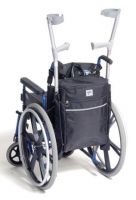
Material or metal systems for carrying crutches or walking sticks. May fit to rear or side of scooter.
Additional seat cushions
It is possible to use additional cushions in a mobility scooter, to provide better comfort and pressure care. Ensure the additional cushion fits within the dimensions of the scooter seat without distorting. The additional height of the cushion might cause the armrests to become too low to provide support, although some armrests are height adjustable.
Useful organisations

British Healthcare Trades Association (BHTA)
The BHTA is the largest trade association for suppliers and manufactures of mobility/homecare products, including adjustable beds. They have a code of practice to which their members sign up.
Contact the BHTA to obtain a list of members in your area.
New Loom House
Suite 4.06
101 Back Church Lane
London E1 1LU
Tel: 020 7702 2141
Fax: 020 7680 4048
Email: bhta@bhta.com (and bhta@bhta.net)
Website: www.bhta.net
Driving Mobility
Driving Mobility (formally the Forum of Mobility Centres) is a network of independent organisations covering the United Kingdom, offering information, advice and assessment to people who need to gain or retain independence through mobility.
Tel: 0800 559 3636
Email: info@drivingmobility.org.uk
Website: www.drivingmobility.org.uk
Mobility Trust
Mobility Trust provides powered wheelchairs and scooters for people who have severe disabilities.
Mobility Trust
17b Reading Road
Pangbourne
Berkshire RG8 7LR
Tel: 0118 9842588
Email: mobility@mobilitytrust.org.uk
Website: www.mobilitytrust.org.uk
Motability, the Charity
As a charity Motability provides charitable grants in certain situations.
Warwick House
Harlow
Essex CM19 5PX
Tel: 01279 635999 (8.30am-5.30pm Monday to Friday)
Website: www.motability.org.uk
Motability Scheme
The Motability Scheme enables disabled people to get mobile by exchanging their mobility allowance to lease a car, scooter or powered wheelchair.
Customer Services
Tel: 0300 456 4566
Website: www.motability.co.uk

Rica
Rica is a UK research charity providing information for older and disabled people.
G03, The Wenlock
50-52 Wharf Road
London N1 7EU
Tel: 020 7427 2460
Email: mail@rica.org.uk
Mobility webpage: www.rica.org.uk/content/mobility
Choosing a mobility scooter webpage: www.rica.org.uk/content/choosing-mobility-scooter
Shopmobility
Shopmobility is a service that helps all people who consider themselves to have mobility problems (whether through disability, illness or injury) to continue to get around city and town centres independently. It offers a range of mobility and other equipment for hire.
Website: www.shopmobility.org.uk
Which?
Which guides - Mobility scooters
For further advice from the DLF
For clear, practical advice and information on products and suppliers of daily living equipment, please take a look at our Living Made Easy website: www.livingmadeeasy.org.uk
You can contact the DLF’s Helpline which is open Tuesday to Thursday from 10am to 4.30pm. Tel: 0300 999 0004 (calls charged at your standard landline rate even if you are phoning from a mobile).
Alternatively, you may wish to contact us:
- via email: info@dlf.org.uk
- or letter to: DLF, 34 Chatfield Road, Wandsworth, London SW11 3SE
To help us give you a concise and informative reply, please provide us with as much detail as possible, including information on the difficulties you are having and any solutions you have considered.
If you are looking for advice about equipment, an independent living centre would give you the opportunity to try out a range of equipment. Some centres can give advice and information on scooters. To find a local centre look online, ask your local authority or find your nearest Equipment Demonstration Centre in the UK on DLF's webpage Equipment Demonstration Centres
For specialist mobility advice and services you can contact your local mobility centre: www.drivingmobility.org.uk/find-a-centre
Released November 2016, to be reviewed by November 2019
Bibliography and references
Department for Transport (2015) Mobility scooters and powered wheelchairs on the road – some guidance for users. London: DfT.
Available at: www.gov.uk/government/uploads/system/uploads/attachment_data/file/411210/Mobility_Vehicle_Users_guidance.pdf
Department for Transport (2011) Results of consultation on proposed changes to the laws governing powered mobility scooters and powered wheelchairs (DfT 2010-10). Section 14. London: DfT.
Available at:
Department for Transport, Confederation of Passenger Transport UK (2015) CPT Code for the use and acceptance of mobility scooters on low floor buses. London: CPT.
Driver & Vehicle Licensing Agency (2016) Assessing fitness to drive – a guide for medical professionals. Swansea: DVLA. 76.
Available at:
Edwards, K. and McCluskey, A. (2010) A survey of adult power wheelchair and scooter users. Disability & Rehabilitation. Assistive Technology. 5 (6). 411-419.
Great Britain. Parliament (1988) Road Traffic Act 1988. London: HMSO.
Great Britain. Parliament (1970) Chronically Sick and Disabled Persons Act 1970. London: HMSO.
Samuelsson, K. and Wressle, E (2014) Powered wheelchairs and scooters for outdoor mobility: a pilot study on costs and benefits. Disability & Rehabilitation: Assistive Technology. 9(4). 330-334.
Taylor, D. (2014) Physical activity is medicine for older adults. Postgraduate Medical Journal. 90: 26-32
Toosizadeh, N., Bunting, M., Howe, C., Mohler, J., Sprinkle, J. and Najafi, B (2014) Motorized mobility scooters: the use of training/intervention and technology for improving driving skills in aging adults - a mini-review. Gerontology. 60 (4). 357-65.
| Attachment | Size |
|---|---|
| 255.69 KB |
All rights reserved. No reproduction or transmission of this publication may be made without written permission. Inclusion (including any sponsorship) does not indicate endorsement or that any item has been recommended or tested. All information is provided without legal responsibility.
Disabled Living Foundation, Tel: 020 7289 6111, Fax: 020 7266 2922, Helpline: 0300 999 0004 10.00am-4.00pm, Email: helpline@dlf.org.uk, Website: www.dlf.org.uk
Reg. Charity No: 290069, VAT Reg. No: 226 9253 54
 (Tell me about the standard)
(Tell me about the standard)
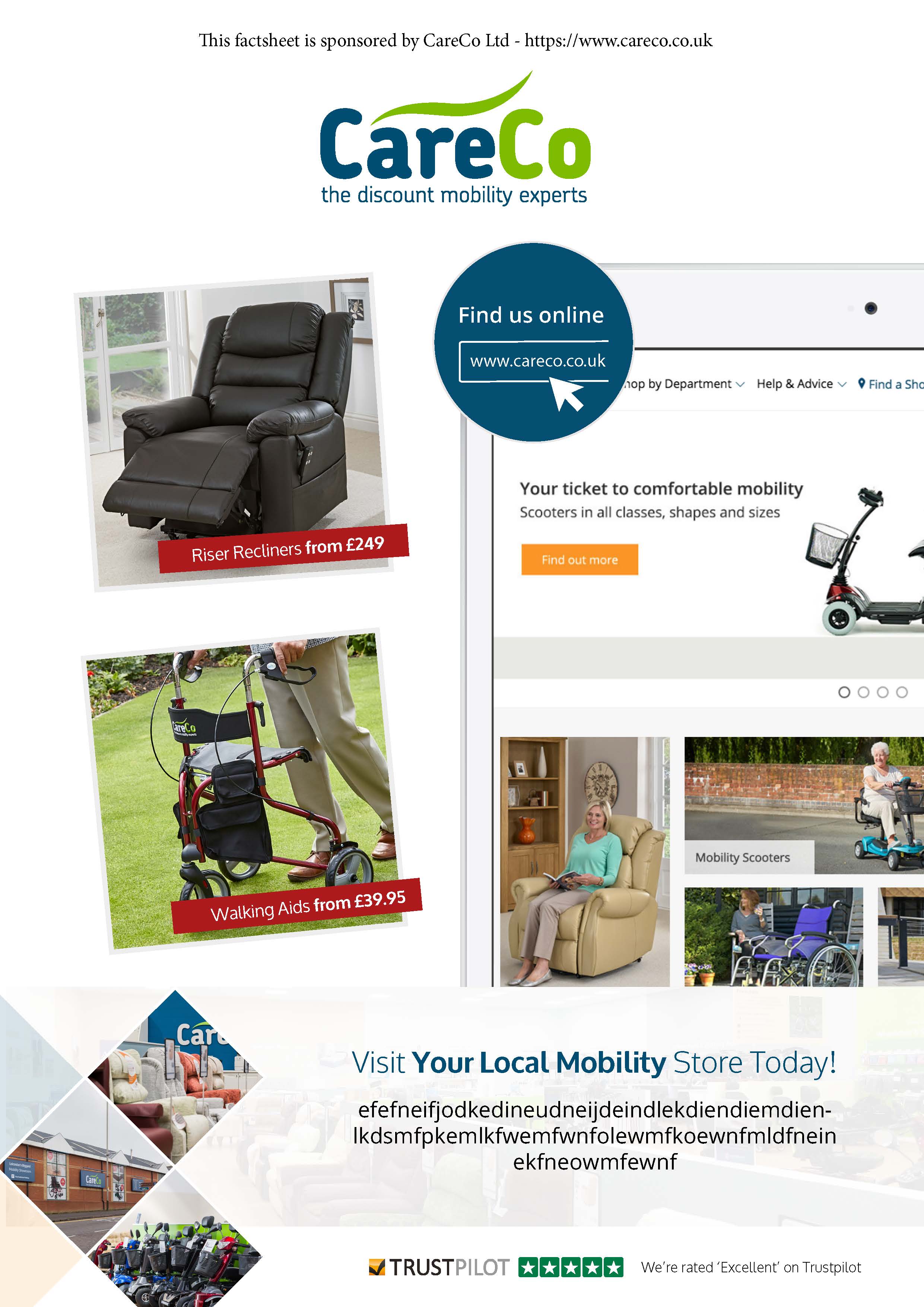
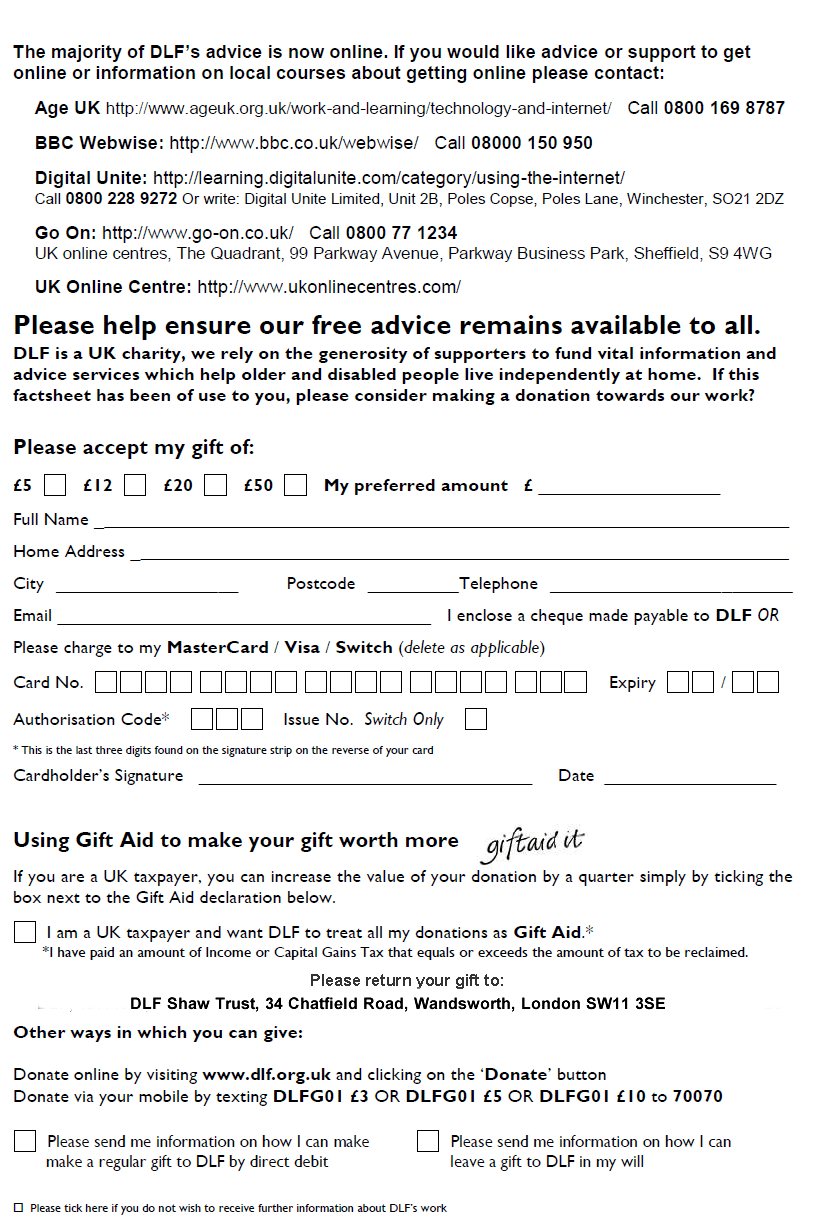
Your personal information is required in order to claim Gift Aid. This information is kept by DLF/Shaw Trust for financial audit purposes. For more information on our privacy policy visit: https://www.dlf.org.uk/content/privacy-policy
